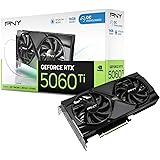
Exploring the AMD Radeon RX 560
Specifications and Mining Hashrate
The AMD Radeon RX 560 is a noteworthy graphics card that has gained attention among gamers and cryptocurrency miners alike. Released in the early 2017, it has been known for its balance between performance and affordability. Understanding its specifications can help potential users make informed decisions, especially when considering its use for mining.
To start with, the RX 560 is equipped with 14 to 16 compute units, depending on the variant. These compute units play a crucial role in determining the card’s performance, especially in handling complex tasks like gaming and mining. The base frequency of the RX 560 is 1175 MHz, which can boost up to 1275 MHz when needed. This enhanced frequency allows the card to perform efficiently during demanding applications.
In terms of processing power, the RX 560 is built with 896 to 1024 stream processors. These stream processors help execute parallel tasks, making the RX 560 a strong candidate for rendering graphics and solving computational problems inherent in mining cryptocurrencies. The card features 64 texture units, which aid in producing high-quality visuals by detailing images and textures effectively.
The RX 560 integrates approximately 3 billion transistors, contributing to its capabilities. In terms of pixel fill-rate and texture fill-rate, it achieves a peak pixel fill-rate of 20. 4 GP/s and a peak texture fill-rate of 81. 6 GT/s. This level of performance ensures graphics are rendered swiftly and smoothly, enhancing the user experience in gaming and mining tasks.
Max performance is a critical aspect, with the RX 560 boasting a performance level of 2. 6 TFLOPs. This figure is significant as it indicates the amount of floating-point operations that the card can perform per second, further establishing its utility in gaming and mining settings.
Equipped with GDDR5 memory, the RX 560 has a memory interface of 128 bits. It provides a maximum memory bandwidth of 112 GB/s, with a memory speed of 7 Gbps. This configuration supports fast data transfer, which is essential during high-intensity tasks such as mining. However, the maximum memory size is capped at 4 GB, which may limit its effectiveness when mining certain cryptocurrencies as networks continue to evolve and require more memory for processing.
The AMD Radeon RX 560 demonstrates commendable specifications that cater to varied users, from gamers seeking high-quality visuals to miners looking for efficiency. Its balance of performance and affordability continues to make it a relevant choice in the market, particularly for those looking to explore cryptocurrency mining without a significant upfront investment in hardware.
Summary of AMD Radeon RX 560 Specifications :
- Compute Units : 14/16
- Base Frequency : 1175 MHz
- Boost Frequency : 1275 MHz
- Stream Processors : 896/1024
- Texture Units : 64
- Transistor Count : 3 B
- Peak Pixel Fill-Rate : 20.4 GP/s
- Peak Texture Fill-Rate : 81.6 GT/s
- Max Performance : 2.6 TFLOPs
- Memory Type : GDDR5
- Memory Interface : 128-bit
- Max. Memory Bandwidth : 112 GB/s
- Memory Speed : 7 Gbps
- Max Memory Size : 4 GB

The AMD Radeon RX 560 Graphics Card for Cryptocurrency Mining
The AMD Radeon RX 560 is a popular graphics card that has gained attention for its mining capabilities in the cryptocurrency world. As cryptocurrencies like Ethereum, Zcash, and Monero become more prevalent, understanding how this graphics card works and its performance in mining can help enthusiasts and investors make informed decisions.
In terms of mining performance, the RX 560 shows competitive hashrate figures. For Ethereum mining, the card achieves a hashrate of approximately 11 MH/s (megahashes per second) under standard settings. With overclocking, which involves adjusting the card’s performance settings to increase efficiency, this hashrate can be raised to around 13 MH/s. Overclocking allows miners to enhance the card’s performance, potentially leading to higher earnings.
Similarly, the RX 560 performs well when mining Zcash, a privacy-focused cryptocurrency. The standard hashrate for Zcash mining is about 110 sol/s (solutions per second). With careful tuning and overclocking, miners can push this to around 140 sol/s. This improvement illustrates how overclocking can significantly impact mining efficiency and profitability.
When it comes to Monero, known for its emphasis on privacy, the RX 560 offers a hashrate of approximately 275 H/s (hashes per second) under normal conditions. By utilizing overclocking settings, particularly adjusting the core and memory frequencies, miners can achieve a hashrate of about 350 H/s. This makes the RX 560 a viable option for miners targeting Monero due to its solid performance.
The overclocking settings for the RX 560 are essential for maximizing its potential. A common setup includes adjusting the voltage, core, and memory settings. For instance, a typical voltage setting is around 0, with the core frequency for Ethereum set at 1125 MHz, Zcash at 1300 MHz, and Monero also at 1300 MHz. The memory frequency is often pushed to 2100 MHz. This configuration not only enhances the mining efficiency but also ensures that the power consumption remains relatively low, averaging about 75 watts per hour.
The AMD Radeon RX 560 is an effective graphics card for cryptocurrency mining, especially for Ethereum, Zcash, and Monero. Its capability to achieve significant hashrates through overclocking, coupled with its manageable power consumption, makes it an appealing choice for miners. As the cryptocurrency market continues to evolve, understanding the strengths and limitations of such hardware is crucial for individuals looking to participate in this dynamic financial landscape.
Summary of The AMD Radeon RX 560 Mining Hasrates
Ethereum Mining Hashrate : 11 MH/s
OverClocking Hashrate : 13 MH/s
Zcash Mining Hashrate : 110 sol/s
OverClocking Hashrate : 140 sol/s
Monero Mining Hashrate : 275 H/S
OverClocking Hashrate : 350 H/S
RX 560 OverClocking Settings :
- Voltage : 0
- Core :
- Ethereum : 1125
- Zcash : 1300
- Monero : 1300
- Memory : 2100
Power Consumption : 75 Watt/Per Hour
Price : 100-150$




